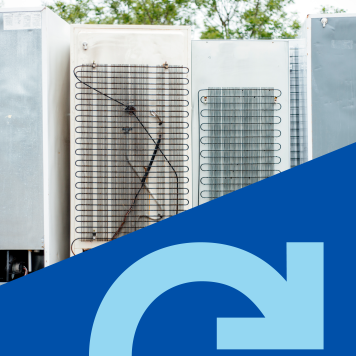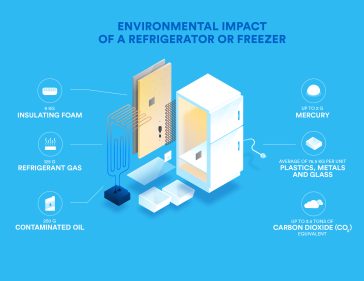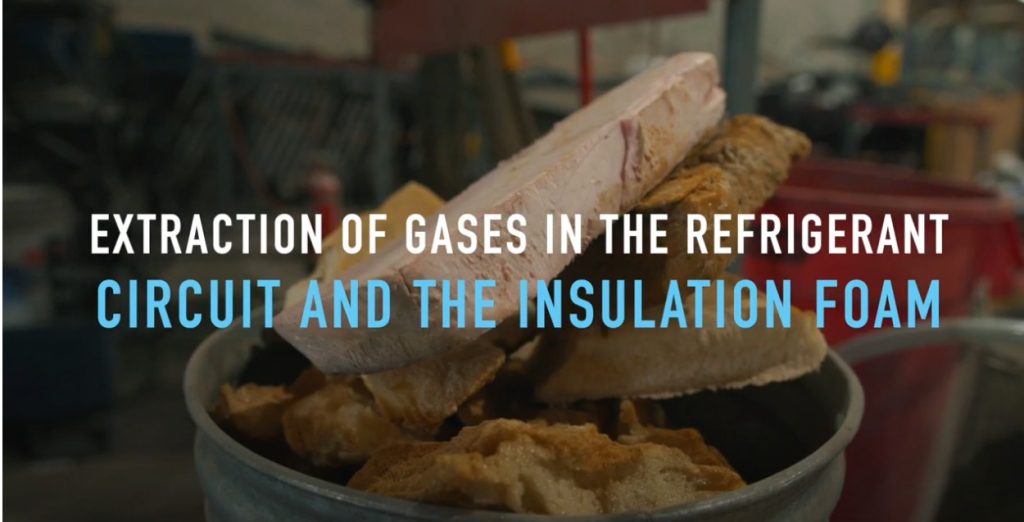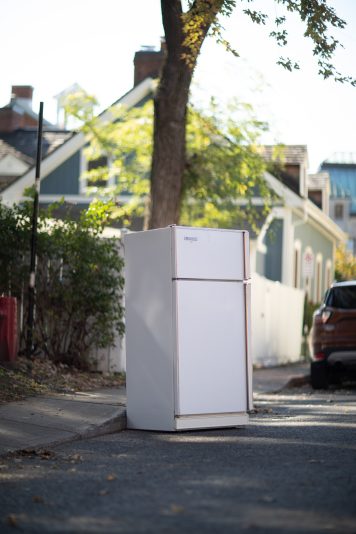Recycling refrigerators responsibly is a crucial step to protecting the environment and fighting global warming. What are the parts inside a fridge and the key steps to recycling this appliance? Read on to find out.
Environmental impact of a fridge that is not recycled
A fridge that is not recycled responsibly generates an average of one tonne of greenhouse gas (GHG) emissions. These appliances contain halocarbons, a major greenhouse gas contributing to climate change.
Recycling a refrigerator responsibly is equivalent to:
- Using a reusable coffee cup 13,870 times
- A car travelling 4,500 km, i.e., a distance greater than Montréal to Banff (3,735 km)
- Driving 1,850 km in a truck, as if 42 people were moving from Ahuntsic to Saint Jérôme
- Riding 1,000 km in a big rig
- 488 bus rides to work
- Buying 62 pairs of jeans, i.e., one pair per year from 18 to 80 years old
- Laundering clothes 96,618 times in hot water
- Eating 138 beef meals





